Mount Fuji, also known as Fuji-san, is one of the most iconic symbols of Japan and a must-see for any trip to this magnificent country. This majestic mountain is located on the island of Honshu, about 100 kilometers southwest of Tokyo. Here's everything you need to know about Mount Fuji.
THE STORY OF MOUNT FUJI
The history of Mount Fuji is a fascinating tale that dates back thousands of years, this iconic mountain of Japan has deep historical and cultural significance. Mount Fuji was formed by volcanic eruptions around 600,000 years ago, and is considered an active volcano. Throughout Japanese history, Fuji-san has played a central role as a spiritual and artistic symbol.
As early as the 8th century, temples and shrines were built around Mount Fuji, making the mountain an important pilgrimage site for practitioners of Buddhism and Shintoism. Mountaineers and pilgrims have climbed Fuji-san for religious, spiritual and artistic reasons.
Mount Fuji has also been a source of inspiration for many Japanese artists, poets and writers; it has been frequently depicted in ukiyo-e ( Japanese prints ) and other forms of traditional Japanese art. The most famous work featuring Mount Fuji is the print "The Great Wave off Kanagawa" by artist Katsushika Hokusai .
Over the centuries, Mount Fuji has continued to embody natural beauty and spirituality in Japan. Its place in the country's culture and history is undeniable, making it one of the most precious and symbolic sites in Japan.

THE ASCENT OF MOUNT FUJI
Climbing Mount Fuji is a memorable adventure for many visitors to Japan. The mountain not only offers spectacular panoramic views, but it is also steeped in symbolism and spirituality. Here's a look at what it's like to climb this iconic mountain.
Climbing Mount Fuji is generally possible during the summer season, from early July to early September. It is during this time that the mountain is cleared of snow, allowing climbers to access the hiking trails. There are four main routes to reach the summit: Yoshida, Subashiri, Gotemba, and Fujinomiya. Each offers a unique experience, but the Yoshida Trail is the most popular and best maintained.
For hikers, the ascent often begins with a night climb to reach the summit before sunrise, a tradition known as "góraiko". Watching the sun rise from the summit of Mount Fuji is a magical experience, and many climbers consider it a spiritual moment. The panoramic view from the summit allows one to gaze upon the earth and sky, and it is no wonder that this mountain is associated with religious and spiritual beliefs in Japan.
During the climb, hikers can stop at mountain stations to rest, refuel, and enjoy the food and drinks on offer. The mountain huts offer hot meals, which is much appreciated given the changeable weather conditions.
Finally, once at the summit, hikers can visit the Kitaguchi Hongū Fuji Sengen-jinja Temple, an important place of worship located on the northern flank of Mount Fuji. It is a place where climbers pray for their safety and success during the ascent.
Climbing Mount Fuji is a unique experience that combines adventure, spirituality and breathtaking views. It poses a challenge for many visitors, but the reward of watching the sunrise from the top of this iconic mountain is well worth it.

MOUNT FUJI IN ART AND CULTURE
Mount Fuji has had a special place in Japanese art and culture for centuries. Here's how this majestic mountain is rooted in Japanese creativity and tradition:
-
Ukiyo-e: Ukiyo-e prints, created by renowned artists such as Hokusai and Hiroshige, have often depicted Mount Fuji. The most famous work is undoubtedly Hokusai's "The Great Wave off Kanagawa", where Mount Fuji is visible in the background. These prints captured the beauty of Mount Fuji and became iconic in Japanese art.
-
Waka poetry: Mount Fuji is a major source of inspiration for traditional Japanese poetry, particularly waka poems. Poets, over the centuries, have celebrated its majesty and cultural significance in their writings.
-
Folklore and religion: Mount Fuji is associated with various religious beliefs in Japan, it is revered as a sacred mountain, and many shrines and temples are located at its feet. For example, the Fujisan Hongū Sengen Taisha Shrine is an important place of worship.
-
Literature: Mount Fuji appears in many Japanese literary works, ancient and contemporary, it is often used as a metaphor or as a central element of the plot.
-
Popular culture: Mount Fuji is a symbol of Japan, and it is found in popular culture in many forms. Movies, TV series, manga, and video games have incorporated it into their stories, cementing its iconic status.
-
Tourism: Mount Fuji attracts millions of tourists every year, many visitors go to the fifth level, where they can enjoy the view, visit souvenir shops and taste local specialties. Some even climb to the top for an unforgettable experience.
Mount Fuji is therefore much more than just a mountain, it is a pillar of Japanese cultural identity, a source of inspiration for artists and a symbol of Japan throughout the world. Its presence in Japanese art and culture is a testament to its deep and lasting meaning.

MOUNT FUJI ON TRADITIONAL JAPANESE CLOTHING AND STREETWEAR
Mount Fuji also holds a special place on various traditional Japanese clothing and streetwear . Its majestic silhouette and cultural significance make it a popular motif, notably on kimonos , haoris , sukajans ( Japanese jackets ), fabrics ( furoshiki ), fans, and many other fashion items.
The kimono, one of the most iconic traditional Japanese garments, can often feature Mount Fuji motifs. Kimonos decorated in this way are often worn on special occasions, such as weddings or festivals, they embody a deep appreciation of nature and a respect for the sacred mountain.
The haoris, a type of light jacket worn over the kimono, can also be decorated with Mount Fuji motifs. This adds a touch of sophistication and tradition to a garment that can be worn in a variety of settings.
Sukajans, Japanese jackets popular in streetwear fashion, also frequently incorporate Mount Fuji into their aesthetic. These clothes, both modern and steeped in tradition, make Mount Fuji a must-have for those looking for a touch of Japanese culture in their clothing style.
Mount Fuji is also found on fans, fabrics, accessories and even shoes (notably geta, traditional Japanese shoes), thus bringing a part of the Japanese spirit into everyday fashion . It is a visual reminder of the beauty and deep meaning of this mountain in Japanese culture.
Whether on elegant kimonos, classic haoris, trendy sukajans, or other fashion items, Mount Fuji remains an iconic motif that allows everyone to wear a part of Japanese cultural wealth. It symbolizes the harmonious coexistence of tradition and modernity in Japanese fashion.
10 THINGS TO KNOW ABOUT MOUNT FUJI
Many legends and historical facts accompany Mount Fuji, here is a top 10 of the most popular:
-
The Mount of 30 Names: Mount Fuji is nicknamed the “mountain of 30 names” because of the multiple names it has received over the centuries.
-
Women's Ban: The summit of Mount Fuji was closed to women for many years, this ban was lifted in 1868.
-
Inspiration for Art: Mount Fuji has been a source of inspiration for many artists, particularly for the ukiyo-e prints of Katsushika Hokusai.
-
Place of Pilgrimage: Many Japanese consider climbing Mount Fuji to be a spiritual pilgrimage.
-
Summit Post Office: At the summit of Mount Fuji, 3,776 meters above sea level, there is a post office where hikers can send postcards marked with the summit stamp.
-
The Fujinomiya Trail: There are several routes to climb Mount Fuji. The Fujinomiya trail is one of the oldest and most popular.
-
Legend of the Red Dwarf: According to legend, a red dwarf guarded the treasure of Mount Fuji in a cave. When he is finally freed, he spreads wealth across the mountain.
-
Mount Fuji Peak Festival: Every summer, the summit of Mount Fuji is the site of festivals, fireworks and prayers for visitors.
-
UNESCO World Heritage Site: Mount Fuji was listed as a UNESCO World Heritage Site in 2013, an honor that reinforces its cultural and natural importance.
-
Cultural Influence: Mount Fuji has had a considerable impact on Japanese culture, appearing in films, songs, poems, plays, and even company logos and posters. Bank notes.
These facts and legends illustrate the rich history and significance of Mount Fuji in Japan.

Now, let's conclude! As you have understood, Mount Fuji is much more than just a mountain since it embodies the very essence of natural beauty, spirituality and Japanese culture. Whether you plan to climb its slopes or simply admire its splendor from the plain, Mount Fuji is a marvel not to be missed during your visit to Japan. It offers an unforgettable experience that will leave you with lasting memories of your trip.










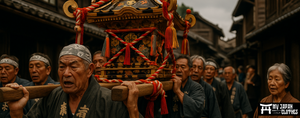



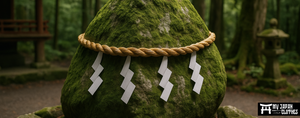



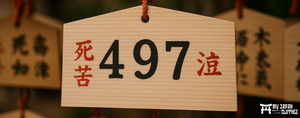








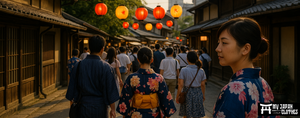




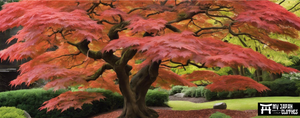
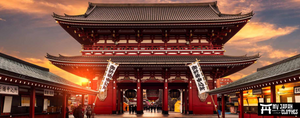
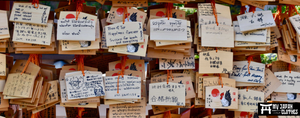

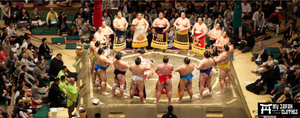















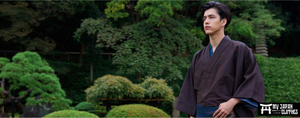
Leave a comment